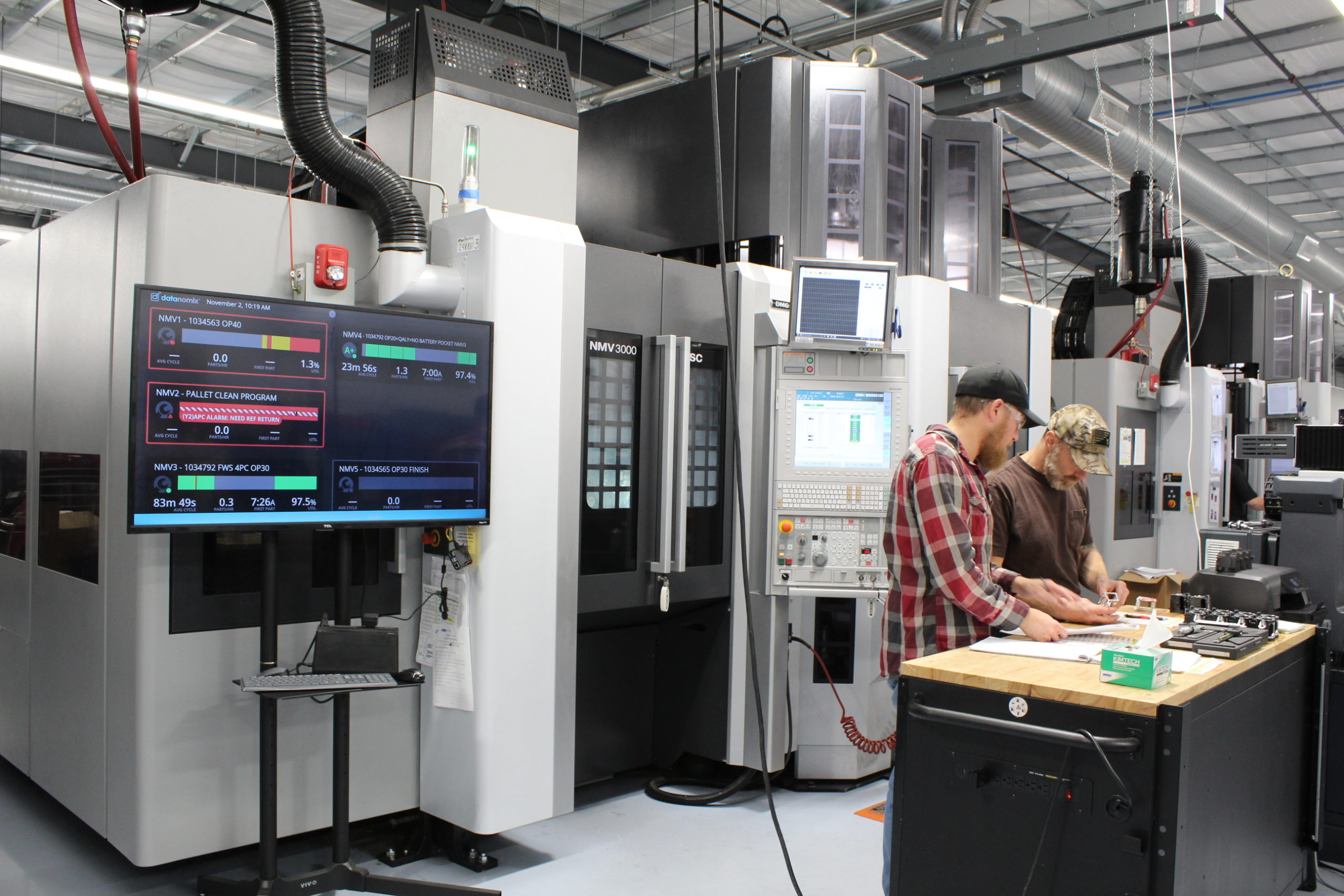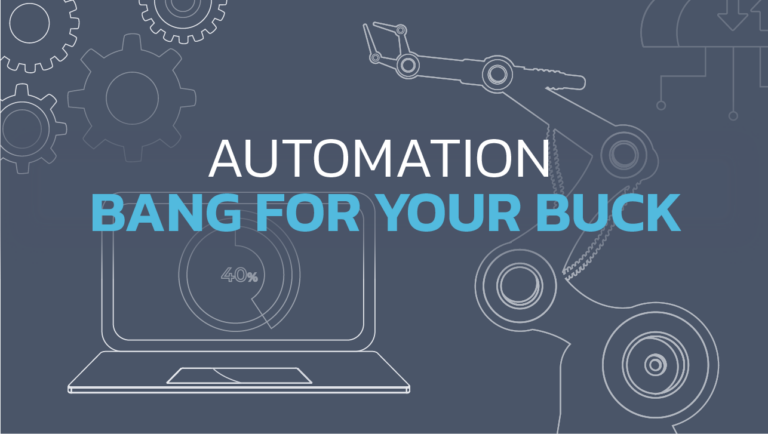How to Fight Labor Shortages in Manufacturing
Datanomix can help you improve operations, make it easier to hire new talent, and create a culture where people want to work.
— May 2021 study by Deloitte and The Manufacturing Institute
“The manufacturing skills gap in the U.S. could result in 2.1 million unfilled jobs by 2030, with a potential cost of $1 trillion in 2030 alone.“
It’s difficult to turn on the TV or check your phone’s newsfeed without seeing stories about The Great Resignation or Massive Labor Shortages blasting from your screen. Everywhere you look, there are Help Wanted and Workers Needed signs, and every company is trying to lure workers with bonuses, higher pay, remote work, and unique perks like free lunches, ping pong tables, and “bring your dog to work.”
But still, every industry—especially manufacturing—is struggling to attract, hire, and retain employees to keep the wheels of commerce rolling smoothly. Despite entry-level wages being double the minimum wage in most locations in the US, manufacturers still cannot attract front-line workers to the industry, let alone the skilled labor needed to operate machines, provide quality assurance, or engineer CNC programs.
The most obvious solution for manufacturers to fill the labor gap is automation. The use of robotics and unattended machining is being expanded in factories of all sizes, driving gains in productivity that address some of the issues with missing people. But with the resurgence of manufacturing in North America due to reshoring and increased demand, even robots can’t keep up with the production requirements most manufacturers face.
— Aaron Springer, Vice President, TW Springer
“Unattended operation is where we’re going with the technology. There’s just not that many people looking for jobs in manufacturing these days. The more we can automate our processes, the better. We can deliver more productivity with the same number of people, and our focus on technology helps with recruitment.”
If even advanced automation doesn’t help address all of the labor shortages of today’s markets, then how do manufacturers—especially mid-market manufacturers—keep their business on track in the face of these worker challenges?
One unexpected way that manufacturers are addressing the labor shortage is production monitoring. More precisely, next-generation production monitoring. Datanomix delivers Automated Production Intelligence™, next-generation production monitoring that tracks and visualizes production in real-time, and offers deep insights into overall factory trends over time, all without any operator input required. In short, Datanomix becomes your factory control center.
So how does Datanomix help manufacturers with labor shortages? By empowering the entire factory with data and actionable insights that help your team perform better and deliver your customers’ jobs on time and in-budget. With next-gen production monitoring, machines are better utilized, cycle times are reduced, and resources flow to where they are needed because everyone is on the same page, working to deliver parts.
By improving operations, making it easier to hire new talent, and creating a culture where people want to work, the Datanomix platform reduces the impact of today’s labor shortages. Here’s how:
Operations
- Understanding machine and factory utilization lets management know if production issues are a shortage of capacity—driving the purchase of new CNC machines—or if there are other issues causing underutilization of their current assets.
- Knowing your real job performance—specifically cycle times, setup times, and how those compare to the business plan—gets everyone laser-focused on not just the required level of productivity, but truly understanding every job from a profit and loss perspective.
- The advanced analytics in Datanomix supports unattended operation by giving you the information you need to fully understand what happened during unattended shifts and the insights you need to determine the steps you can take to improve operations.
- With No Operator Input™ required, Datanomix removes much of the paper-based tracking needed for production meetings and reviews, allowing employees to focus on their machines and freeing time that would be spent pulling this information together.
- When you know which operators are falling behind on a job, Datanomix helps you identify gaps in skills so you can intervene and give them the training they need to keep your customers’ jobs on track and reduce stress for operators.
— Aaron Springer, Vice President, TW Springer
“The hard data Datanomix delivers is important because in the past, our gut reaction to production slow-downs was to buy a new machine. With a new machine, you need people to set it up and upgrade software and hardware, and you need more operators to run and maintain the machine’s operations. Now we look at Datanomix and with the data, we know if we can increase production capacity by optimizing utilization before we purchase another machine.”
Hiring
- You can pay more for labor—including bonuses based on bottom-line results—when you have the data to quantify factory operations and profitability. When you’re more profitable, it’s easier to attract workers and compete against manufacturers that pay less.
- New technologies—especially data and analytics—attract younger workers looking for modern systems and software in the workplace. Newer systems also combat the perception of manufacturing being a last-century industry without interesting technology.
- Next-gen production monitoring helps factories create efficient systems and processes. It’s easier to attract potential employees when they can see the results of using Datanomix to improve and streamline factory operations.
— Jamie Bell, Vice President of Operations, Nikel Precision
“Today, I can look at the dashboard, and you see that machine A is running at 68% and machine B is running at 98%, and they’re both running the same part. What quickly becomes obvious is machine utilization and efficiency has a lot to do with the guy running the machine. With Datanomix, we can identify these gaps and work out a plan to address them, including training on best practices.”
Culture
- When everyone knows exactly what’s happening on every machine and every job in real-time, your factory runs more efficiently and your entire team is happier and more productive. Everyone likes to be associated with a winning team.
- When workers embrace and understand the tools that help automate production, they are developing advanced skills that provide a ready path to promotion within the company, or at another company (in the unlikely event they want to move on).
- With everyone on the same page, you create a culture of communication and teamwork across the entire factory. Great company culture goes a long way toward hiring new employees and retaining existing employees, especially among younger individuals.
While next-generation production monitoring is not a magic pill for the manufacturing industry, it does offer distinct and easily-realizable advantages that help forward-thinking manufacturers deal with labor shortages through gains in efficiency and an up-leveling of systems and processes. And it does all of this at a fraction of the cost of a full-time employee.






